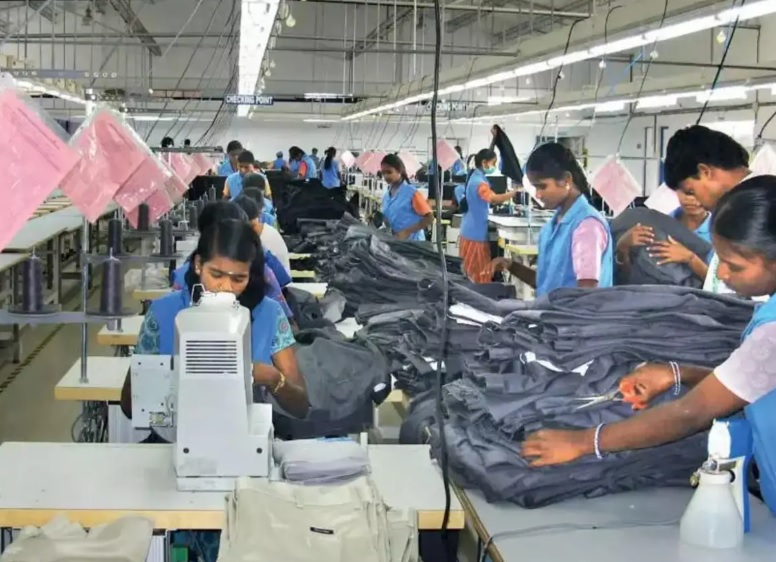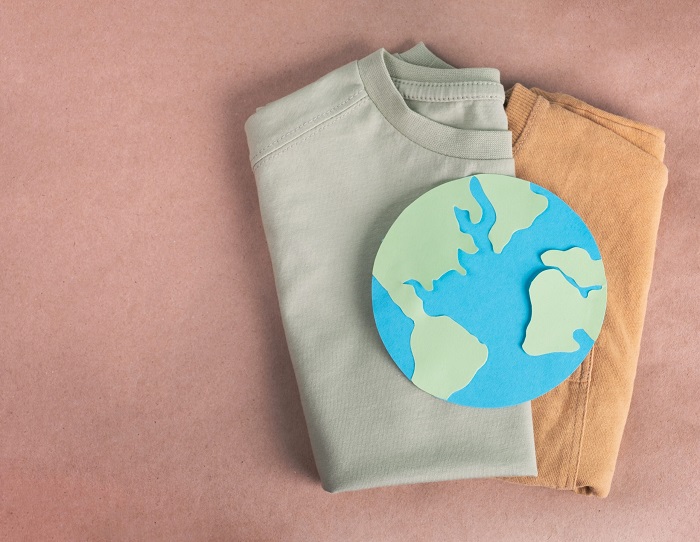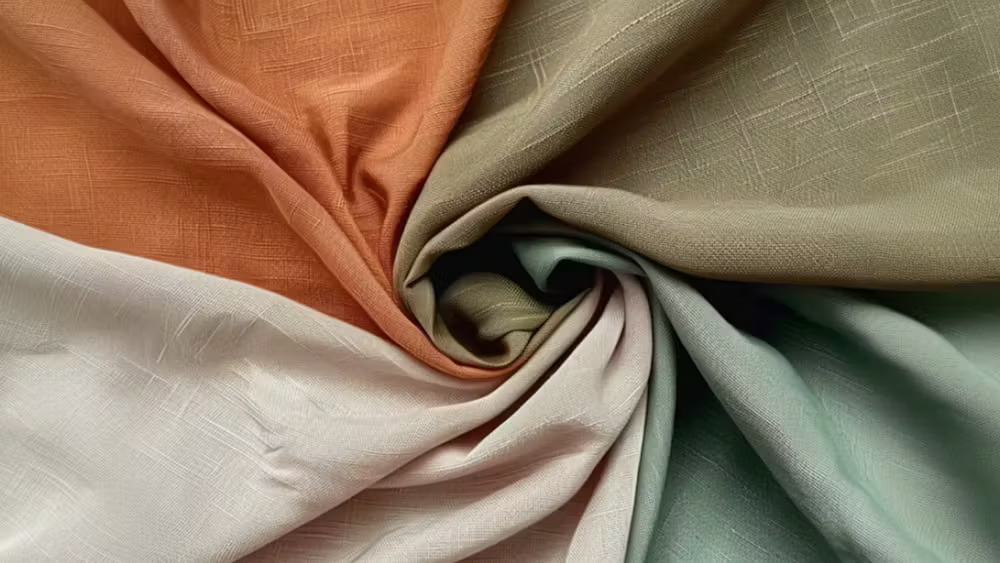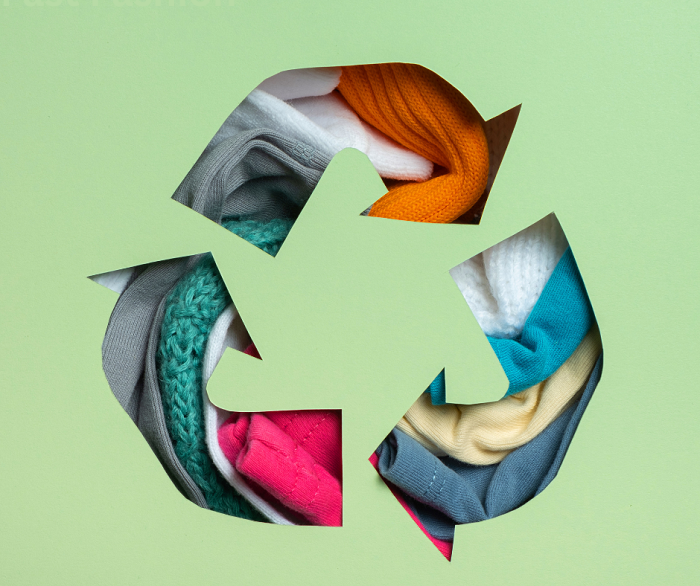FW
With growing concern for environment, products manufactured using recycled materials or adopting a process with lower environmental impact have started to enter the global supply chain. Falling in line, Taiwanese textile manufacturers have achieved remarkable results in developing functional and environmentally friendly fabrics and related products over the years.
Taiwanese companies are creating a wide variety of products with eco-friendly characteristics and innovative design. Among these are functional fabrics, clothing made mainly with natural materials extracted from cinnamon and almond, polyester knitting fabric made from recycled plastic bottles, spun polyester jersey fabric made of recycle PET bottle staple fiber, patented earmuffs, and sports apparel manufactured on a process featuring lower energy consumption. All these meet environmental standards.
Taiwan is showcasing many of these products at the ongoing Sourcing at Magic, August 16 to 19, Las Vegas. The Green Trade Project Office was established in 2011 in Taiwan in response to the fast growing trend of green business, a sector which has gained importance with introduction of an increasing number of national and international environmental standards.
The aim of the Green Trade Project Office is promoting Taiwan’s green products and services via diverse marketing channels, offering consulting services to domestic companies and strengthening Taiwan’s overall competitiveness in the green economy.
www.greentrade.org.tw/eng/en/publications
The textile sector’s concerns will be addressed by the Federal Board of Revenue (FBR) with a handful of new initiatives such as a new anti-smuggling strategy, possible regulatory duty on import of cotton yarn, upward revision of customs values on import of fabric/garments, speedy payment of duty drawback/sales tax refunds, changes in Expeditious Refund System (ERS), clearance of second-hand/used clothing under ‘Red Channel’, and processing of 40 pending cases of sales tax zero-rating on electricity/natural gas supply to textile units.
As per sources, in the last meeting with All Pakistan Textile Mills Association (APTMA) and other associations, the FBR has taken some strong decisions. A committee was formed by the Minister for Finance to discuss and resolve the problems faced by APTMA. The meeting was chaired by Haroon Akhtar Khan, Special Assistant to the prime minister for Revenue. It was attended by the representatives of APTMA, Pakistan Textile Exporters Association (PTEA) and the Garments Manufacturers Association.
Both, exporters and local suppliers of textile items are facing several problems because of which they were losing their competitive edge in international and domestic markets. This was putting their viability in domestic and international markets at stake, and consequently, investment in textile sector had stopped.
Also, pending cheques against FED/SED refund claims, sales tax deferred claims replication, income tax exemption of raw materials under SRO 717, income tax refund u/s 65(B) & 65(E), duties and taxes on coal import, pending incentives of previous textile policy 2009-14 and outstanding claims of incremental textile exports under textile policy 2014-19, were other issues that plagued the textile industry. Representatives of the trade bodies were well informed about these issues.
Reliance Industries would probably be one of the world’s top five petrochemicals producers by the end of the financial year. When the group kicked off a $14 billion project in 2012-13 to pump up capacity at its Jamnagar unit, the target was to raise aggregate capacity of its 20 petrochemicals by 66 per cent. For polyester alone, it would be an 84 per cent jump, reaching a capacity of 3.5 million tons.
But falling crude oil prices have dragged down petrochemical prices particularly polyester. Polyester prices are still below five year averages and this is expected to continue over the next few years. Since polyester is essentially a derivative of crude oil, a fall in the price of crude oil has an impact on polyester prices, although with a lag of six to nine months. After almost a year, prices of polyester have started coming down. The average price of polyester products has come down by almost 25 per cent.
With weak demand from China, the world’s biggest polyester consumer, Reliance will be entering the market at a time when demand and margins are subdued. Polyester, a category of petrochemicals, is a by-product of the crude oil refining process. Polyester products such as polyethylene terephthalate, polyester filament yarn, polyester texturised yarn and polyester staple fiber are used to make textiles, bottles and industrial products.
www.ril.com/
Egypt's two biggest markets for textiles and readymade garments are the United States and the European Union. The country’s goal is to increase exports from $2.5 billion to $10 billion by 2025. Last year, around one third of Egyptian textile exports and more than half of Egyptian readymade garments went to the United States. Textile exports to the United States represent a quarter of non-oil exports and 20 per cent of total manufacturing in Egypt.
Though the textile industry has been blossoming, representing 20 per cent of manufacturing exports, the much celebrated Egyptian cotton has fallen from grace in recent years. Egyptian cotton was once the bar against which all other linens and clothing were measured. Since the 2011 revolution, Egyptian cotton’s star has faded as cash subsidies from the government and output of premium cotton have shrunk.
Egyptian cotton has extra-long staple, demand for this type of cotton does not exceed three to four per cent of the total demand for all fibers. Production of Egyptian long-fiber cotton has fallen from nearly 2.5 billion bales in 1970 to just 3,40,000 bales today.
The industry has realised expensive Egyptian cotton can’t be used to produce cheap yarn. To be a major player, other fibers including short staple cotton have to be used. Nevertheless Egypt will not completely abandon the luxury cotton that bears the nation’s name.
Polyester manufacturer Indo Rama Synthetics has reported a 77.73 per cent decline in standalone net profit for the first quarter ended June 30, 2015, on account of lower selling price because of falling global crude oil rates. The company had posted a standalone net profit of Rs 22.05 crores in the corresponding period a year ago.
Total income from operations, on a standalone basis declined by 10.57 per cent while sales volume for the quarter increased by 4.65 per cent on a quarter to quarter basis. The continuous fall in global crude oil prices in the last few months has led to a reduction in raw material and selling prices for products.
The company expects margins would improve and production would increase in the coming quarters of the current fiscal as capacity utilisation is going to increase further from the current 65 per cent due to availability of the raw materials. Indo Rama is India’s second largest dedicated polyester manufacturer. It has collaborations with technology leaders in Japan, Germany and the US. It adheres to high quality standards and innovative business practices.
www.indoramaindia.com/
To combat farmers' suicides in the cotton-growing belt, Maharashtra government plans to expand the textile hub policy to nine districts across the state. After the huge unrest among farmers in drought-hit regions of Vidarbha, Marathwada and some of northern parts of the state, the state government decided to accord the textile industry the second most important status after agriculture. Thus, Yavatmal, Buldhana, Amravati, Jalna, Parbhani, Nanded, Aurangabad, Beed, and Jalgaon are the districts short-listed, where textile hubs would be developed.
Amravati too would see the launch of a textile park on 100 acres land. The aim is to create a textile township, which would have provisions for multiple activities—from processing to marketing within the hub. The projects will be undertaken via public and private partnership.
Chief Minister Devendra Fadnavis, has urged speeding up of the projects. The Maharashtra State Textile Corporation and Maharashtra Industrial Development Corporation, is expected to coordinate. Besides, he has urged that the authorities streamline details such as water, land, power supply, etc., which are integral for the textile hubs. Fadnavis believes the textile sector lacks proper planning and feels that it is pointless to have a spinning mill in distant western Maharashtra where cotton transport from Vidarbha incurs massive expenditure. Instead, it may be wise for spinning and processing units in areas where cotton is grown this would benefit both, farmers and industrial units.


The continents economy would do well and in turn be able to support garment manufacturing. Consequently, workers would demand higher wages for low-margins, hypercompetitive garment factories. Following this, they would acquire high-wage jobs, the factories would shift to a lower-wage locale and as per Ricardo’s theory of comparative advantage, everyone would enjoy a higher income.
Effects of Ricardo’s theory
The effects of Ricardo’s theory of comparative advantage were experienced by everyone over the past few decades when economies moved up the value chain. One case in point is the ‘Made in Japan’ joke that was so common in the US, as Japan produced cheap products. The joke fell through as the Japanese leveraged their production to dominate global market and started competing with America. Japan outsourced it’s low-skill jobs to neighbouring countries such as China and South Korea.
Usually, one looks at work going to Bangladesh or Vietnam, but not Africa. However, all that is changing now as noted by The Wall Street Journal in its columns as a McKinsey & Co report suggests Ethiopia was identified as a top sourcing country by apparel companies. The Journal states that a garment worker in China earns approximately $150 to $300 a month, whereas in Ethiopia, the same worker earns only $21. These kind of wage differences are attractive.
Overcoming impediments
Yet, there are many hurdles that need to be overcome as African manufacturing is at present a blip on the radar compared to China. It will be a long time before a major upheaval takes place. After all catch-up growth takes a while to take off. There are many hurdles on its growth its path, such as lack of basic infrastructure. Then, there is armed conflict and corruption, to overcome. Many Asian countries though, have grown rapidly without strict measures of corruption control. Economically, what’s more important is that destinations provide reliable electric power and a convenient location for the container ship to dock.
Finally, the million-dollar question is whether manufacturing jobs should be taken to Africa by profit-seeking companies, where such low wages are offered. An unequivocal answer would be a ‘yes’ as the perception is that moving jobs to anywhere in Africa is beneficial for their impoverished population.
A $21-a-month manufacturing job is certainly an improvement, but there are alternatives too, such as raising the garments factory workers’ initial wages. However, such measures mean adding cost to employing workers there. Manufacturers would look at Africa as an option, only if the wage difference was high compared to other countries.
An improvement for African workers may act as a step towards bigger improvements. As the economy strengthens, garment factories would move from country to country, until every country has become industrialised to the point where nobody anywhere is working for $21 a month. Such jobs provide an above-average standard of living. The more Africa’s economy grows, the more the rise in people’s wages. This would be possible if Africa achieves the same level of growth as Asia has done in the past 70 years.
Shahi Exports has launched a new apparel manufacturing unit in Odisha, which would be developed at an investment of Rs 36 crores. The apparel unit, with a capacity of three lakh dresses per month, is expected to provide direct employment for about 2,500 people. The company has 48 production units in the country with employing around one lakh people.
The construction work of the proposed unit would be completed within one year and is being set up at an industrial estate in Mancheswar. The foundation stone for the proposed unit was laid by Chief Minister Naveen Patnaik. “The state government has been giving stress on textile industries as it generates more employment. The state has been contemplating to set up two integrated textile parks at Choudwar and Bhadrak,” said Patnaik after laying the foundation stone of the new unit.
He further added that after Shahi Export’s export oriented manufacturing unit in the state, other textile and apparel majors may consider investing in the state. He also said that the state’s new industrial policy would have provisions to encourage investments in the textiles and handlooms sectors. www.shahi.co.in
Far East Knitting and Dyeing Industries is a leading composite textile company in Bangladesh, with integrated, knitting, high end dyeing, finishing (tubular and open width), and state of the art printing, pigment dyeing and garment washing. The company supplies finished goods to renowned apparel brands Walmart, Primark, New Look and Bershka. Its major products are knitwear such as T-shirts, tank tops and vests and jackets.
The production capacity of finished garments is approximately 1.5 million pieces per month in basic T-shirts. Far East Knitting has floated 25 million ordinary shares. Of the total shares, sponsors or directors owned most of the shares, 78.45 per cent, the public held 19.39 per cent while institutions owned only 2.15 per cent shares. The company is now planning to expand and increase production capacity of finished garments by approximately one million pieces per month in basic T-shirts.
Far East expects its exports will double after completion of the new project. The project is expected to be completed by March 2016. The company has 1,400 sewing machines. The machinery include a variety of automatic and manual machines (plane, overlock, flat-bed, cylinder bed, two needle etc.) The daily sewing capacity on an average is 50,000 to 60,000 pieces a day for basic items and about 45,000 pieces a day for more sophisticated garments.
www.fareastknit.com/
India is the second largest producer of cotton, cotton yarn, cotton fabric and silk after China and far ahead of Bangladesh and Vietnam.
The country leads the world in jute production accounting for 52.3 per cent of the total production followed by Bangladesh with 42.5 per cent.
India’s readymade garment exports amounted to 42.85 per cent of the total exports vis-a-vis 94.2 per cent for Bangladesh, 80.63 per cent for Vietnam and 60.31 per cent for China.
The country has as many as 72 textile parks in various stages of implementation. Once operational, the textile parks will attract investments to the tune of Rs 30,000 crores and generate employment to nearly 4.5 lakh people.
The Scheme for Integrated Textile Parks was launched in 2005 to provide the textile industry with state-of-the-art infrastructure facilities for setting up their textile units.
India’s textile sector contributes 11 per cent to the country’s total export basket. The field is extremely varied, with a handspun and hand woven sector at one end of the spectrum and a capital intensive sophisticated mill sector at the other.
The industry has the capacity to produce a variety of products suitable to different market segments, both within and outside the country.












